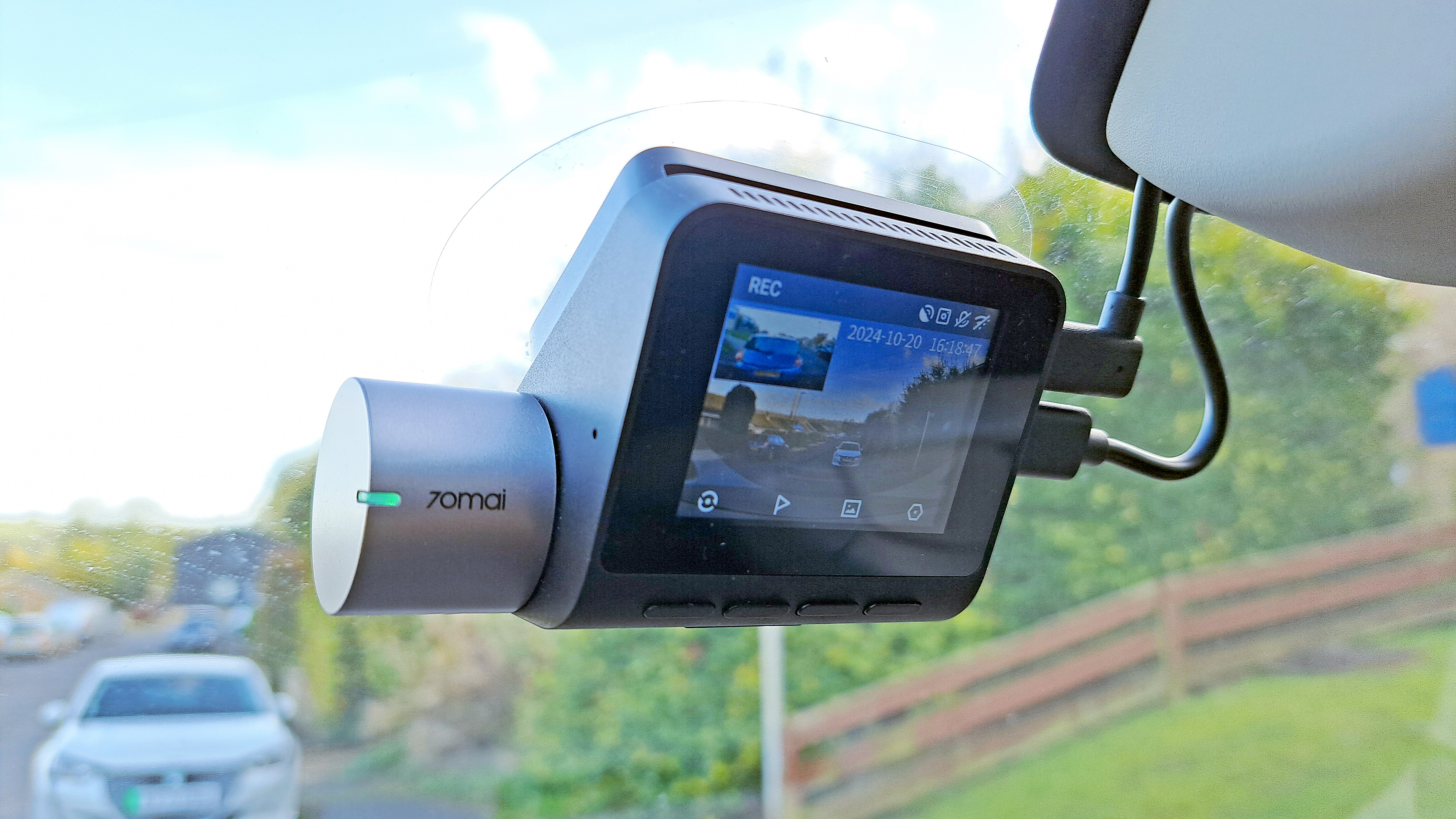
The 70mai Dash Cam A510 is front and rear dash cam set. The front camera is capable of recording video at 2592 x 1944 resolution - that's a useful step up from Full HD (1920 x 1080), but some way short of 4K (3840 x 2160). The rear dashcam records 1080P Full HD footage. The kit is supplied with a 64GB microSD card for on-board video recording, and the camera can be connected to your phone and controlled by 70mai's companion app. This enables settings adjustment, along with live video monitoring and playback of recorded footage. But the stand-out appeal of the A510 is you get all this for a price that, not so long ago, would barely have got you a single, front-facing budget dashcam.
Let's see whether the A510 is good value, and not just cheap...
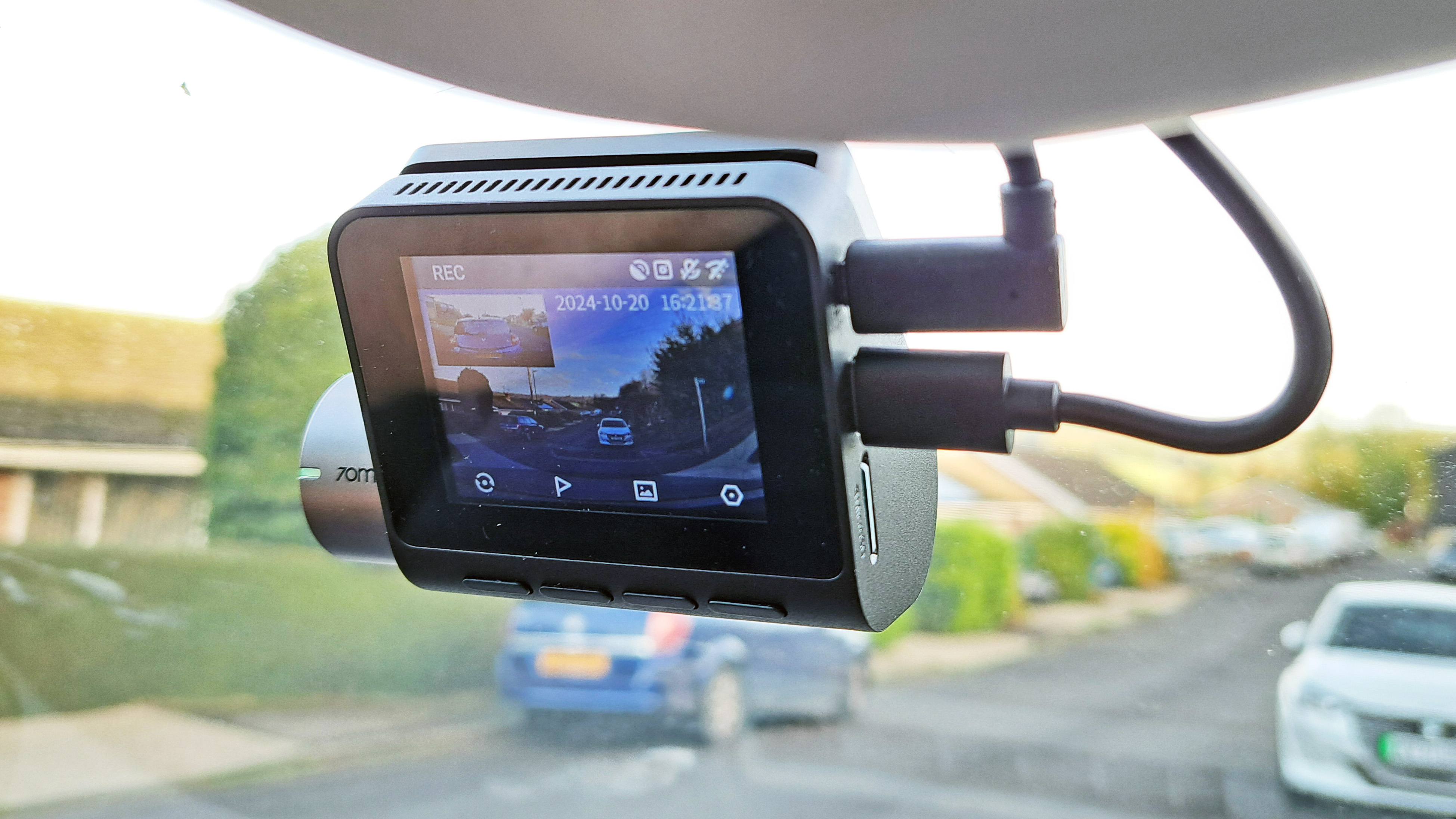
Key features
At the heart A510 front dashcam is a Sony STARVIS 2 IMX675 Sensor. These sensors are designed specifically for security cameras and dashcams and have been engineered to have high light sensitivity while also generating low image noise. According to Sony, STARVIS 2 sensors can "demonstrate sensitivity beyond the human eye as well as outstanding low noise characteristics. These sensors can accurately reproduce colors and textures of targets which are difficult to distinguish in dark locations, drastically improving their performance in low-illuminance environments". The sensor is also capable of recording in HDR - useful when driving in strong sunlight, or at night. Factor in the generous 2592 x 1944 resolution and the front dashcam should, at least on paper, deliver respectable recording quality.
The rear dashcam does not use the same sensor. It maxes out at Full HD image quality. As we'll discover later, these lower specs do have a profound impact on the rear cam's real-world video quality.
If you purchase the optional hardwire kit, the camera is also capable of 24-hour smart parking surveillance, so it will detect a collision even when the engine is off and you're away from the car. The system will then automatically record a 30-second video of the detected event and can notify your phone via the companion app, as the hardware kit is 4G enabled. The kit can also be used for on-demand monitoring of your car, so you can remotely check its surroundings from your phone whenever you like.
Build and handling
The A510 front dashcam feels substantial and well made. Its boxy shape means you get a practically-sized rear LCD display, while the camera lens sits in a protruding cylinder on the side. This can be rotated up and down to direct the camera at the correct area of the road ahead, compensating for the angle of your particular windscreen. As with many dashcams, both the front and rear A510 cameras use a self adhesive pad to attach to your car's glass, via a transparent anti-static sticker.
The rear dashcam is far lighter than the front cam and feels almost hollow as a result, but it's likely just the sensor and lens in a plastic casing - the front camera is the business-end of the set-up containing the processing and power circuitry.
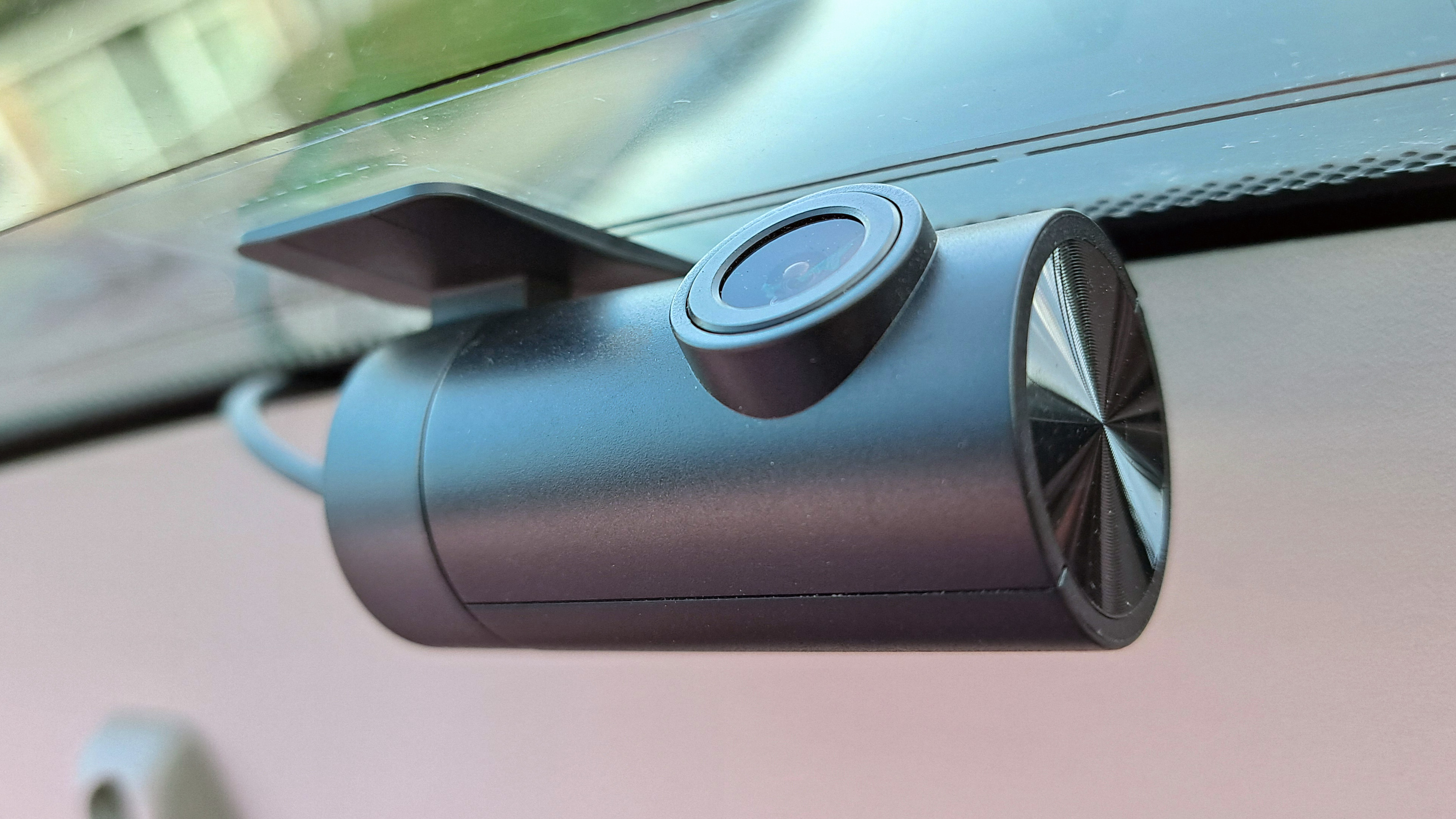
As with any dashcam, fitting the cameras is relatively easy - it's the wiring that's the tricky part. We installed the A510 cameras in a 2010 Renault Grand Scenic - a relatively long 7-seater MPV/minivan. 70mai supplies generously long cables to link the front camera to your car's 12V outlet, and to connect the rear camera to the front cam - there was comfortably enough wire for our installation. Power is supplied from a dual USB adaptor that plugs into your car's 12V/cigarette lighter outlet.
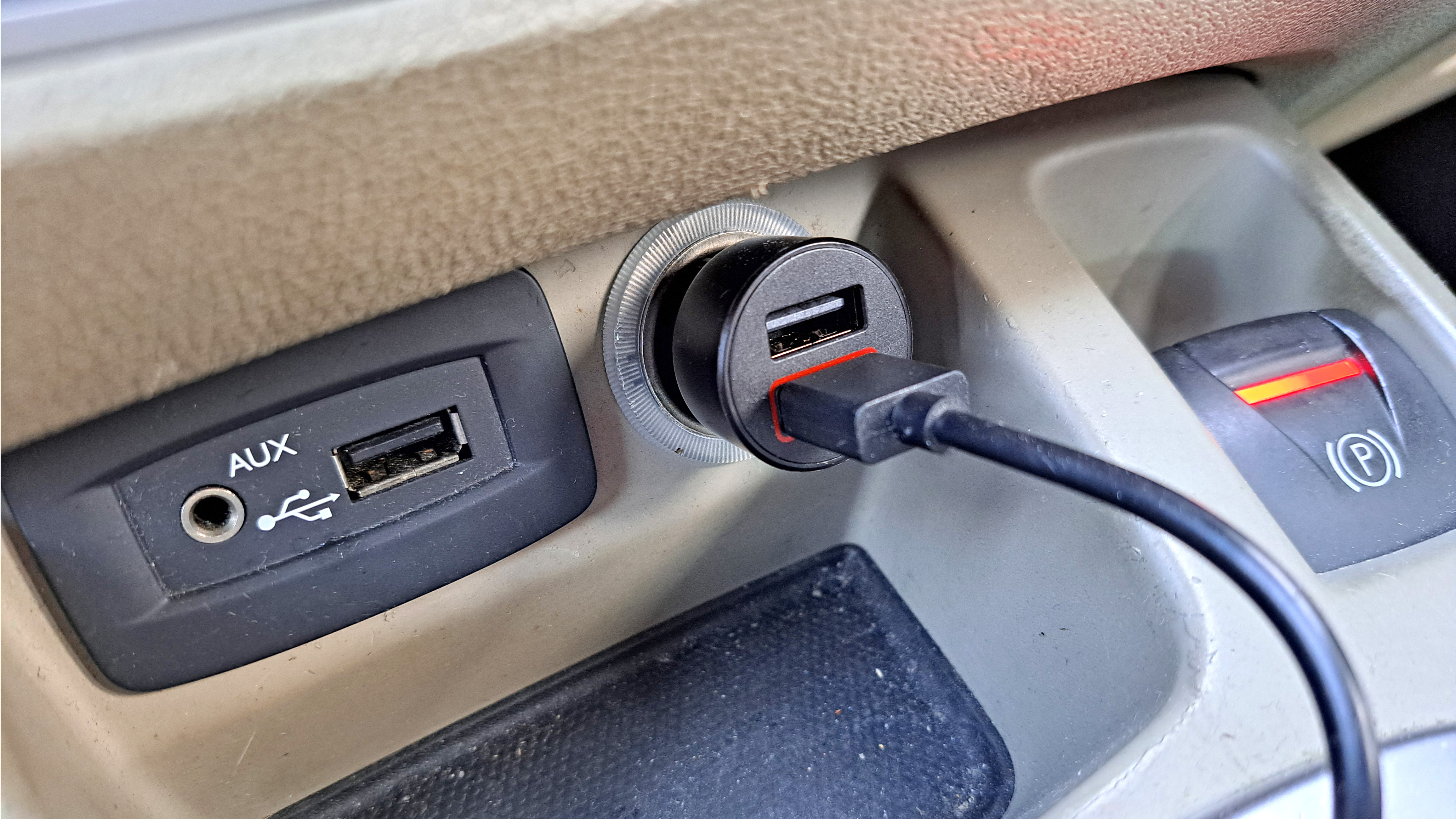
If you then want to conceal all the dashcam cabling in your car's interior trim panels and headlining so it's not visible, it will take time and patience. 70mai does at least supply a plastic spudger tool to help you tuck the wiring out of sight. If you have a hatchback vehicle (where the rear screen will move when you open the tailgate), routing the cable for the rear camera from the main body of the car across to the tailgate necessitates even more care, to ensure it doesn't get crushed every time you shut the boot. This is not an issue unique to the A510 - it's something you'll have to factor when fitting any rear dashcam to a hatchback vehicle.
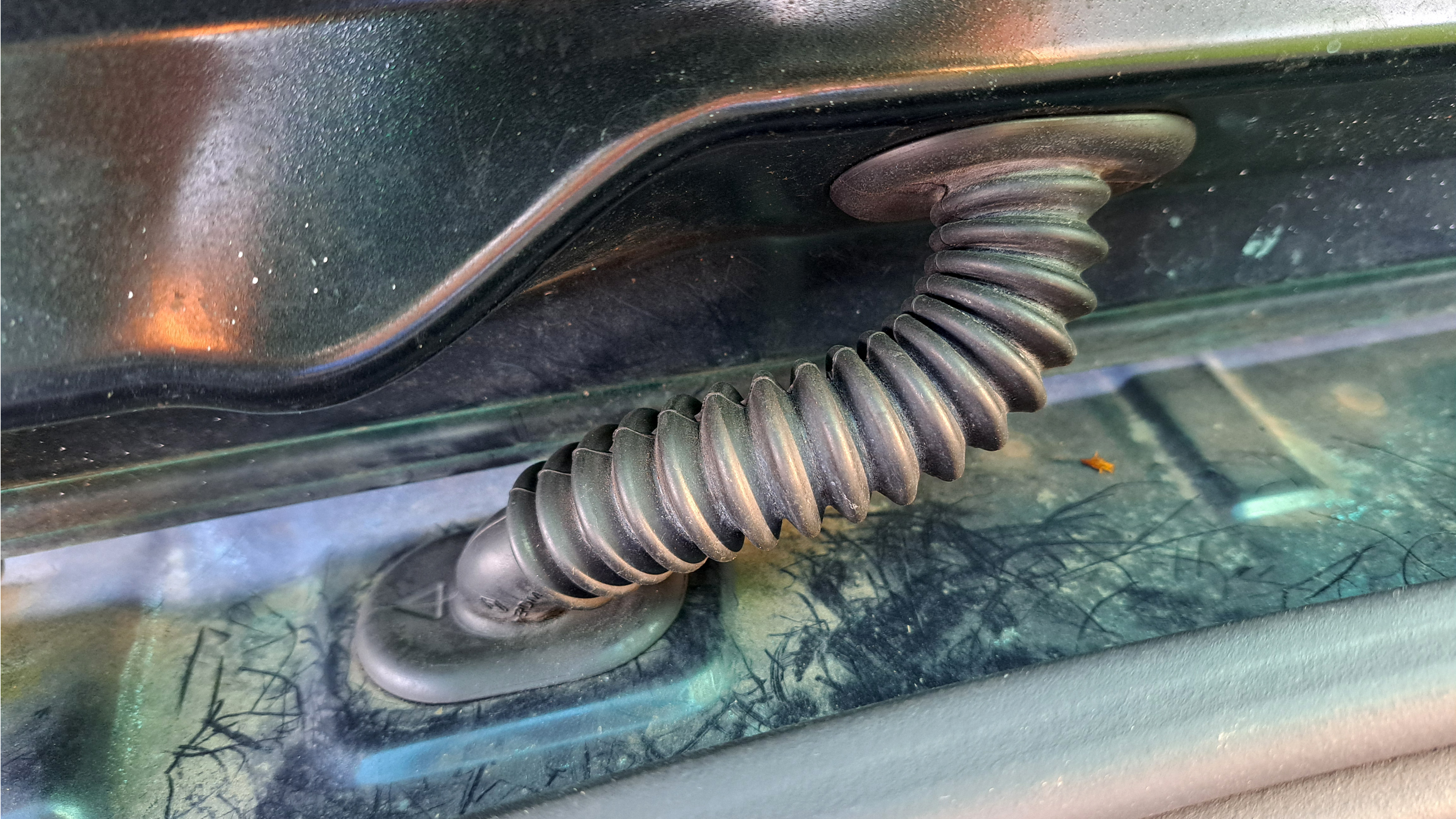
Once you've got both cameras installed and wired in, the cameras automatically fire up and start recording when you car is turned on (the engine doesn't have to be running, at least in our test vehicle). The screen on the front camera can be set to display either the front or rear camera's feed, or you can display the front view with an inset thumbnail preview in the corner showing rear camera's footage.
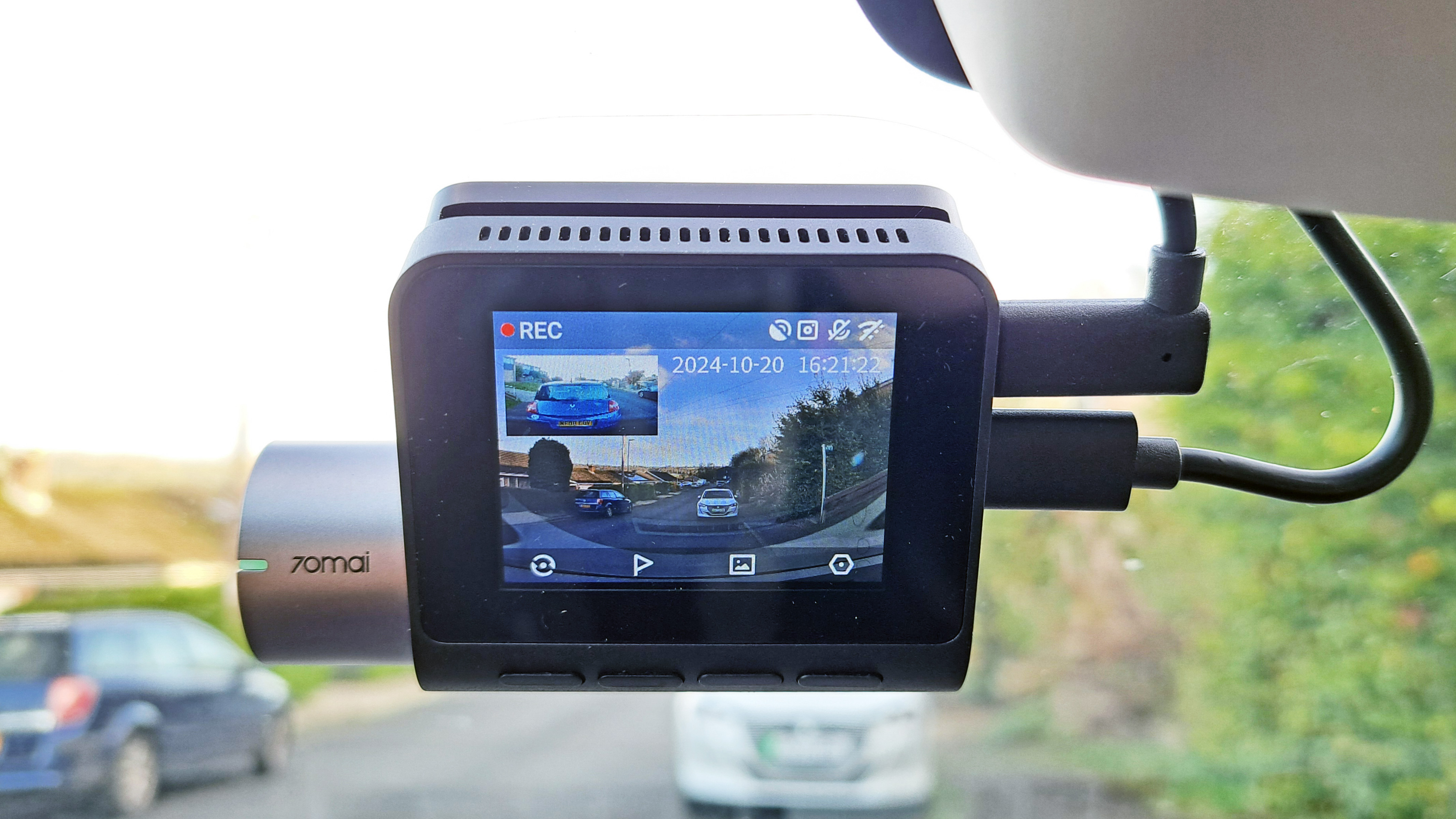
Performance
A manufacturer can cram a dash cam full of extra features, but what really matters is the camera's video quality - after all, that's what's going to be most important for an insurance company to determine who's at fault in a collision.
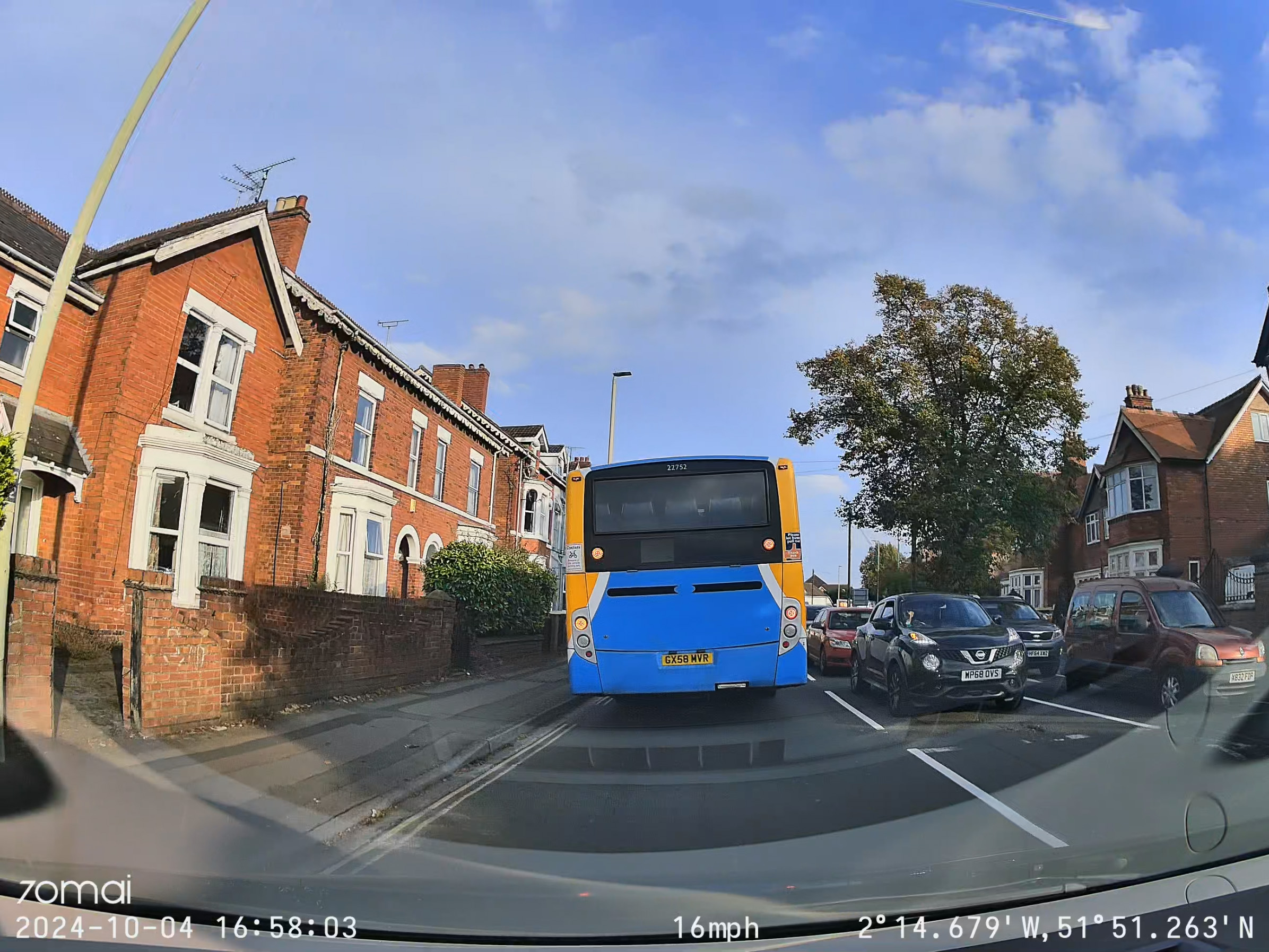
In daylight conditions the A510 front dash cam's image quality is very good. When set to the maximum 2592 x 1944 resolution, video is sharp and fine detail well resolved. Reading number plates of cars ahead is easy when they're directly in front of the camera, though plates on cars driving past on the opposite side of the road are harder to read. This is an issue with most cameras, as fast motion combined with video frame interlacing and digital compression causes moving text on the periphery of a video frame to suffer from motion blur. The camera's automatic exposure metering is accurate and reliable, and I was happy with the dynamic range captured by the STARVIS 2 image sensor.
A potential downside of this high definition recording is the video file size: each minute of footage consumes 172MB of card space, so a 1 hour drive will require around 10 gigabytes of storage. And don't forget the rear camera will also be recording simultaneously and consuming even more storage space, albeit not as much as the front cam (61MB/minute). It means the included 64GB microSD card fills up fast - we'd recommend upgrading to a 256GB card if you drive frequently and want more than a few days of archive footage before the camera automatically overwrites the oldest videos.
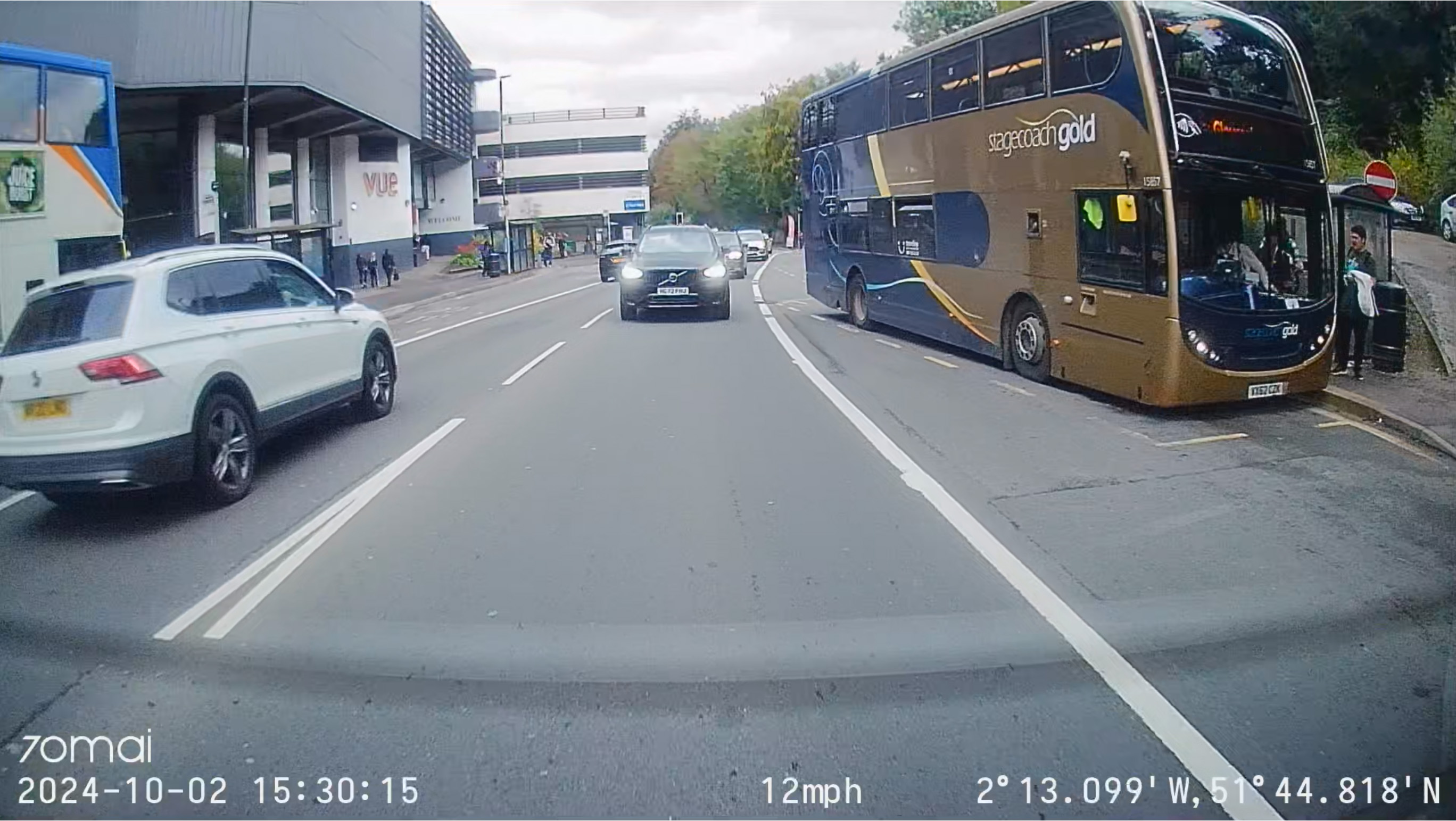
While the front camera's image quality is commendable, the rear's is far less impressive. Judging by its relative lack of detail and higher digital image noise, it's using a significantly smaller image sensor than than in the front cam. A following car will need to be within approximately 3-4 car lengths of you for its number plate to be legible, and the rear camera doesn't have the clarity for number plates on cars passing on the opposite side of the road to be easily readable. Dynamic range is also noticeably inferior to what's captured by the front cam, with highlights much more easily blown out and shadows lacking definition.
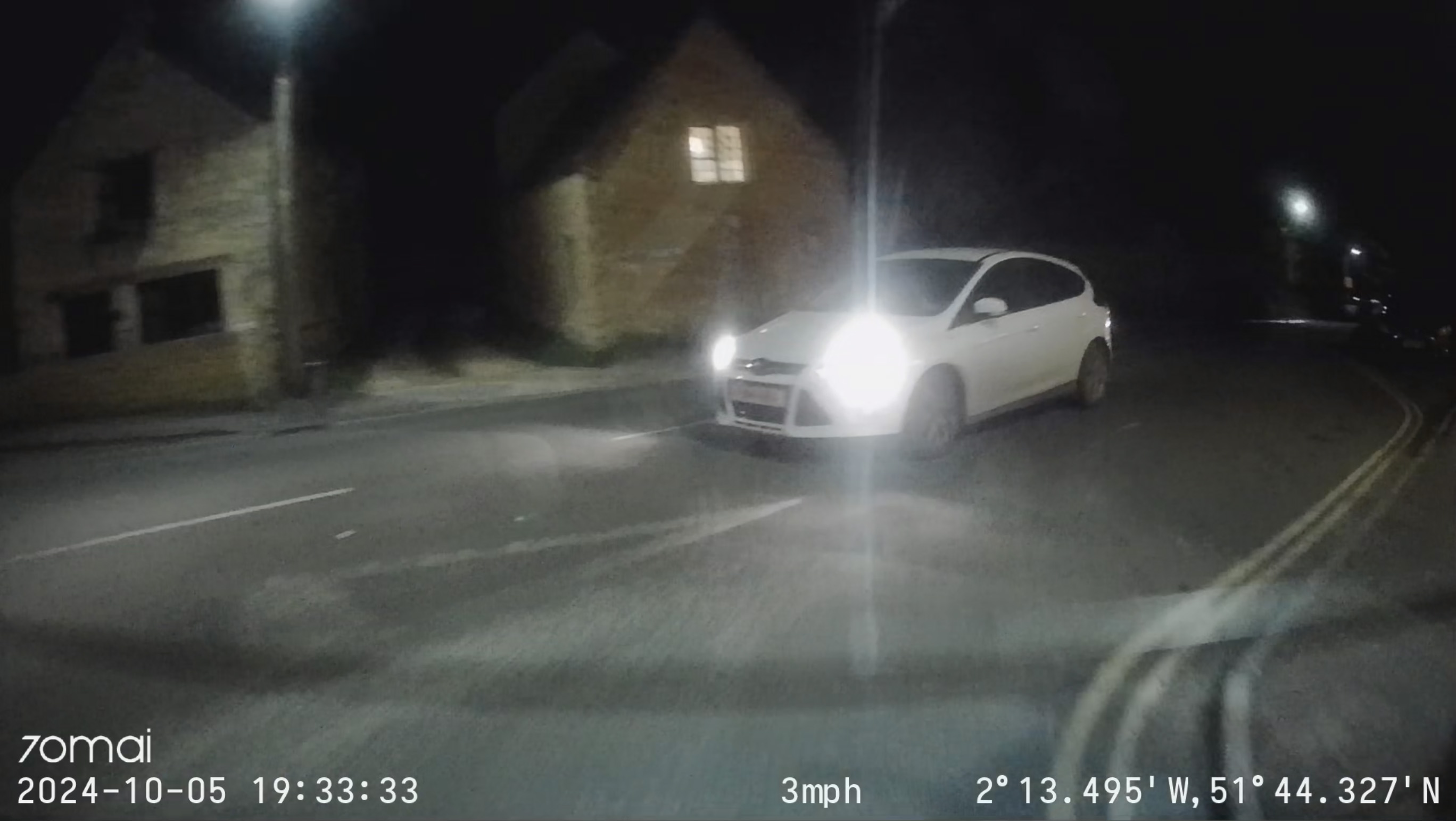
While the rear cam's image quality is disappointing in the day, it's downright poor at night. Rear cam video is severely lacking in detail, video compression artifacts mask what fine detail is left, and the dynamic range issue becomes even more obvious. If your car is rear-ended at night, the footage from the rear camera will only be useful for identifying simply that a car has hit you - it will rarely be clear enough to identify the make/model, let alone number plate details.
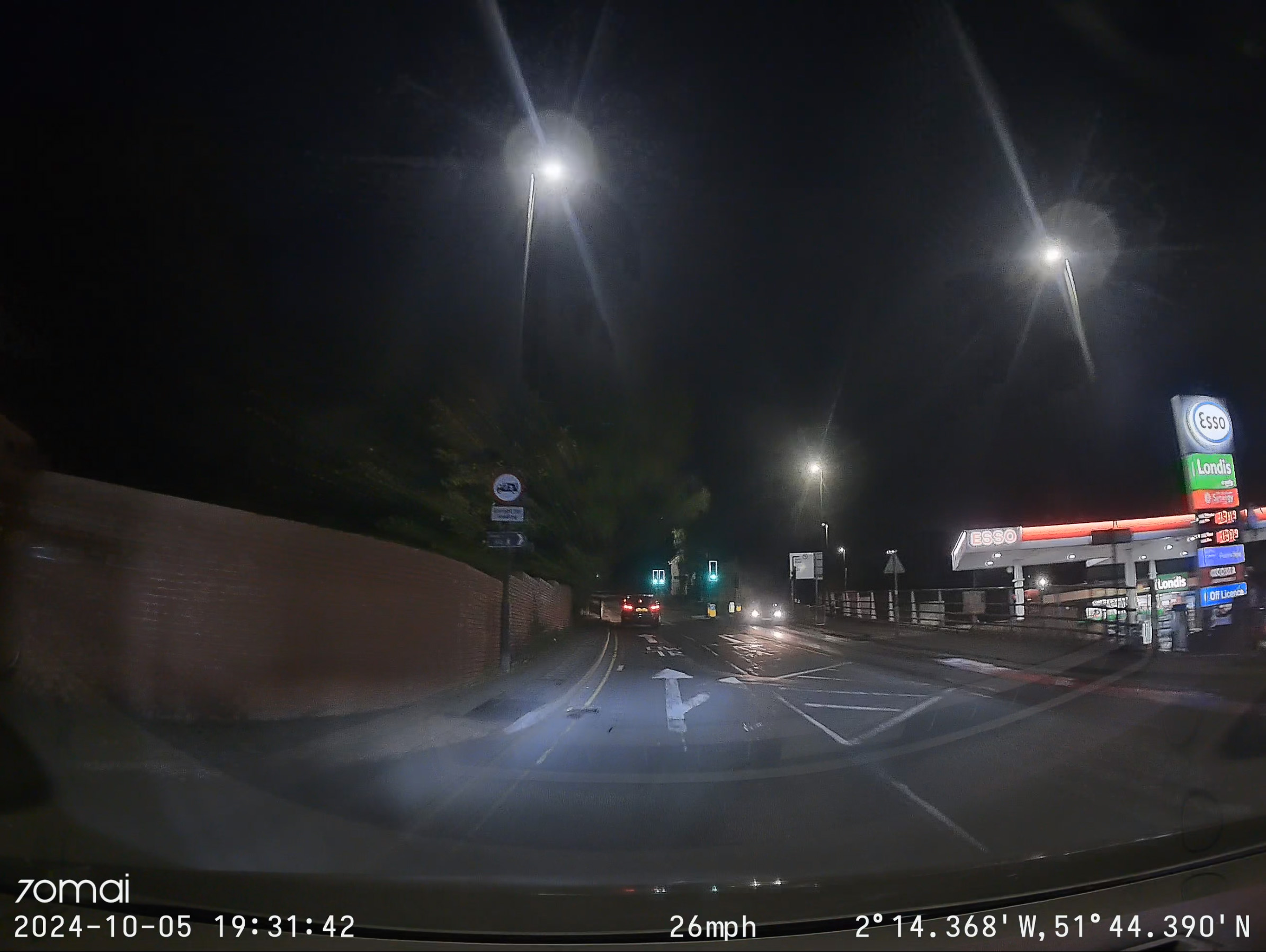
Thankfully the front camera performs much better at night, thanks to its higher resolution and far better dynamic range. Number plates are still legible, albeit less so than by day, but it still gives you a fighting chance of identifying the details of an oncoming vehicle immediately prior to a night-time collision.
We did not fit the optional hardwire kit as this involves additional modification of the car's electrical system and fuses, which I didn't feel comfortable performing on my car.
Verdict
A dashcam should really now be considered an essential element of driving safety. If you're involved in a collision, the ability to prove through video evidence that you're not at fault could be invaluable. I don't say this just because I work with cameras, but because my own car was recently rear-ended and consequently totalled/written-off. Had it been equipped with a front and rear dashcam, this would have irrefutably proven that I was not to blame.
And it's thanks to dashcams like the 70mai A510 that we can now say that a dashcam is indeed "essential". Its low price is relatively insignificant when you consider all the other costs incurred when driving - fuel, insurance, etc - yet you still get two cameras and a host of extra features.
I was impressed by the performance of the A510 front camera - its day- and night-time video quality is excellent for the money. I've been using the camera in my daily driver for over two months now and it's performed flawlessly. The rear camera is more of a token effort, however. Its video quality is far inferior to that produced by the front cam, but it's better than having no camera at all. Considering the A510 set costs about the same as an entry-level, front-only dashcam, think of the rear cam as more of a bonus. If you really want top-notch video quality from your rear camera, you'll need to spend extra cash on a more upmarket product.
Overall, the 70mai A510 is excellent value and ideal if you want a low-cost front & rear dashcam.







